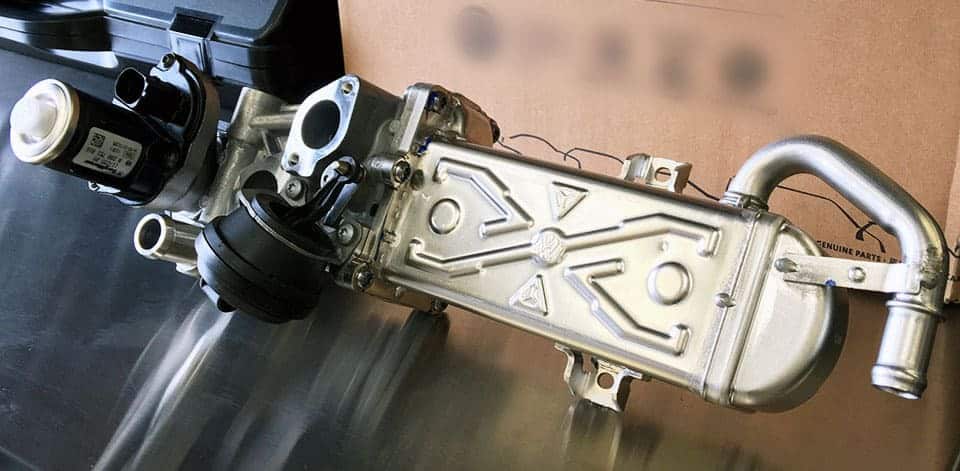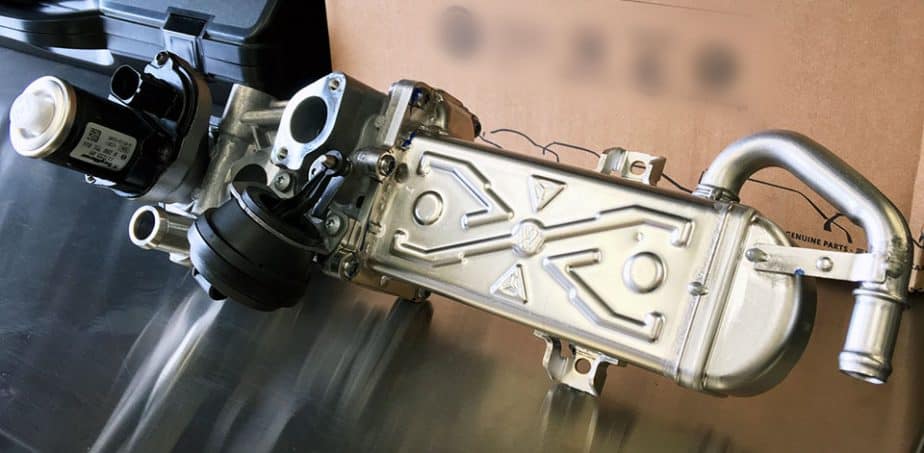The EGR Valve
M B JARVIE EGR VALVE SOLUTIONS
Let’s get the acronym out the way. EGR means Exhaust Gas Recirculation. Almost all modern cars, petrol or diesel, make use of this system to control pollutants within the exhaust. The operating princpal applies to both petrol and diesel engines, however, diesel EGR systems are typically more complex and, as such, are prone to failure or the requirement for cleaning or renewal.

What is EGR?
As mentioned, EGR is an emissions-realted system. It should therefore be no surprize that the primary function of the EGR valve is to serve the increasingly stringent emissions standards and limits placed upon vehicle manufacturers. As a byproduct of compbusiont, particualry in a diesel engine, oxides of nitrogen are formed (often refered to as NOx). These are harmful to the environment and it is therefore it is desirable to control and limit them. This is where EGR comes in. By introducting exhaust gases (devoid of oxygen) into the air intake, the combustion temperature will be lower, resulting in the production of NOx being reduced. To think of things in a simpler way: how do you encourage a fire to burn more intensly? You pump the bellows and introduce oxygen. We’ll, EGR does the opposite.
Thinking about what EGR valve does, it then follows that the introduction of exhaust gasses into the engine must not occur when the driver demands power from the engine. An oxygen-depleted charge will not produce any power. The EGR valve mus therefore have a control system that dictates when it should be open, closed or indeed, somewhere inbetween.
EGR systems have evolved over the years however, the system essantially consits of pipework linking the esxhaust and the inlet manifolds, the EGR valve itself and a control method. Early EGR valves were typically vacuum controlled, nowadays however, electonics plays a big part. Modern EGR valves feature a continuously variable valve, controlled and monitored via the engine managenent software. While monitoring a number of engine sensor inputs, the engine management software will determine excatly when and how to actuate the EGR valve. The EGR valve itself must repond quickly to the demands of the engine management programme; must be resistant to high temperatures and be able to operate in a hositle environment. The lastest development to be tacked on to the EGR valve system is the EGRE valve cooler. The cooler further drops the temperature of the exhaust gasses before introduciung them into the engine.
EGR Valve – Common Failure
There are a number of reasons that an EGR valve or EGR system can develop faults. Potential issues include control systems faults (wiring or pipework). However, the most common issue that will cause your EGR valve to misbehave is the valve itself gets contaminated with carbon and sticks. A sticking EGR valve is unable deliver the specified amount of exhaust gas to the engine. A sticking EGR valve can cause a range of symptoms, normally driveability issues often accompanied by a “check engine” malfunction indicator lamp illuminated on the driver display.
An EGR valve will tend to deteriorate over time and begin to stick. The usual scenario that is most noticeable is an EGR valve that begins to stick open when it should be closed. This will affect engine performance, can cause erratic idle and generally reduces engine smoothness. If you are suspicious the your EGR valve may be faulty, at M B Jarvie Ltd we can carry out a diagnostic check on your vehicle’s EGR valve and confirm if it is operating within specification.
With the addition of EGR valve coolers in recent years, there is the potential for engine coolant to leak into the exhaust gasses and into the engine. The effect of this can be subtle with some white smoke at the exhaust and of course a loss of engine coolant.

EGR Valve Solutions?
When presented with an EGR valve fault, At M B Jarvie Ltd we offer our customers the repair option of renewing or removing the EGR valve. Modern EGR valves are often buried in the engine bay and renewal can be very expensive (factoring in both parts and labour). The EGR valve operates in a harsh environment and it therefore prone to failure. We therefore offer our customers the option of removing the EGR system from the engine management programme. In this instance the EGR valve would be driven closed and the pipework physically blanked off to ensure that exhaust gasses cannot enter the engine. The engine management programme is then modified to allow fault-free operation without the fault-prone EGR system active, ensuring your car runs on fresh air and not carbon-contaminated exhaust gases.





